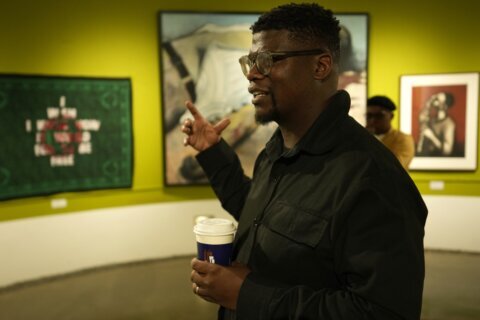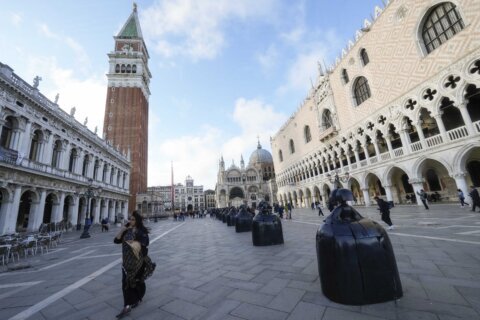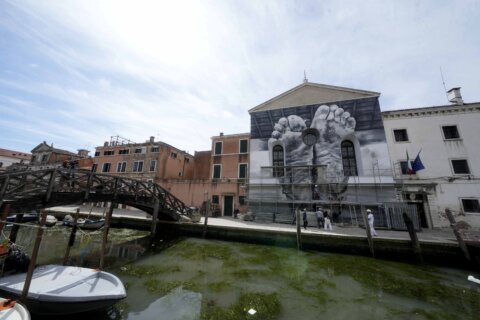A sneak peek inside the National Museum of Women in the Arts before it reopens in DC this weekend
(Video edited by WTOP/Michelle Goldchain)
1/21
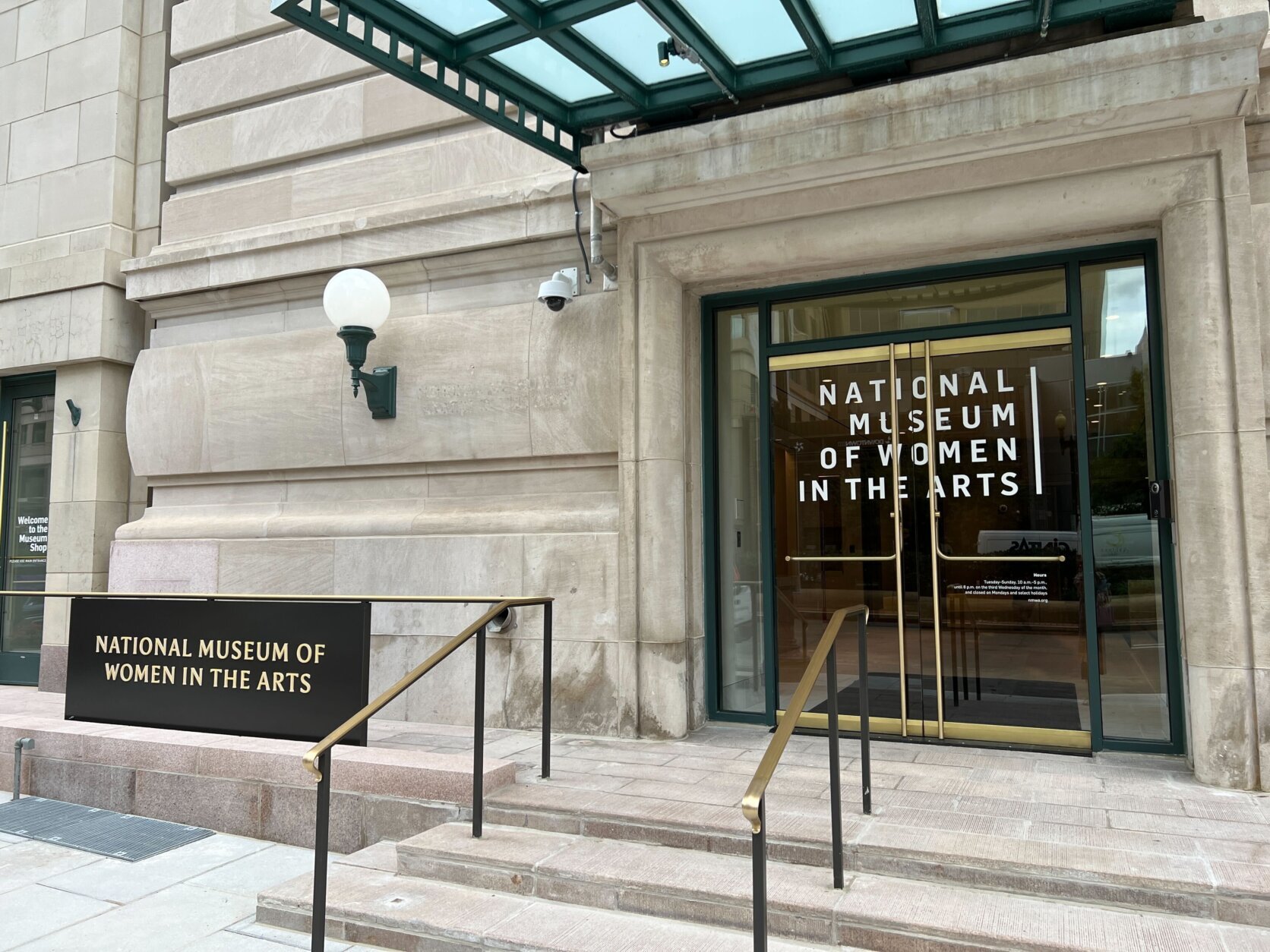 2/21
2/21
(WTOP/Jessica Kronzer)
Susan Fisher Sterling, the museum’s director, said the reopening serves as an opportunity for the museum to reintroduce itself to the public. The museum opened in 1987, making it the first of its kind to showcase only women artists.
“What we see now, 35 years later, is there’s still an important role for the museum to play in continuing the path of making sure that women are treated equitably in the art world,” Sterling said.
Between 2008 and 2020, only 11% of all acquisitions at 26 prominent American museums were works by female artists, according to Artnet News.
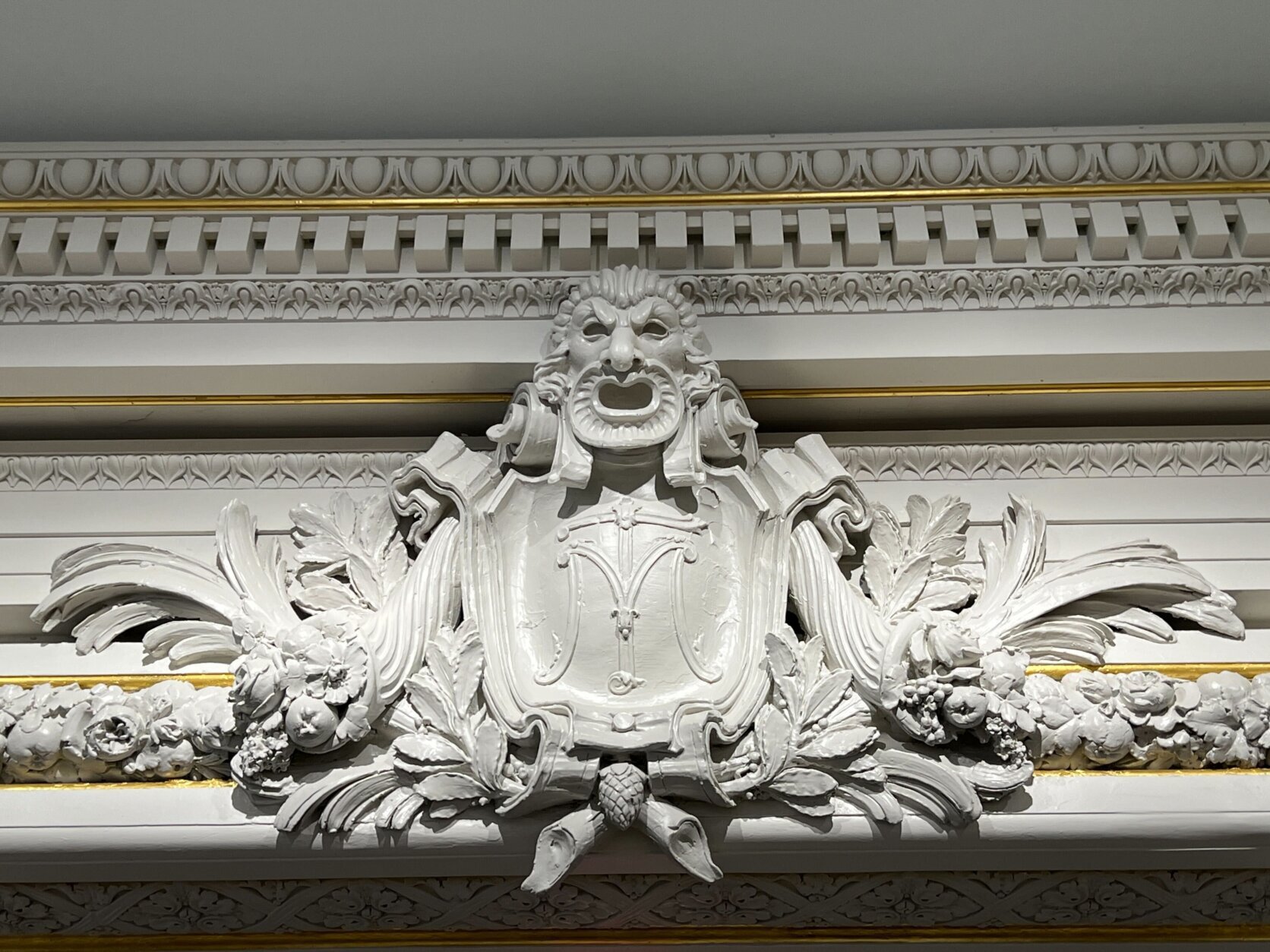 3/21
3/21
(WTOP/Jessica Kronzer)
The structure was built in 1908 and originally served as a temple for the Masons.
“This was an organization that did not allow women members, and so we kind of love the irony in the fact that this gorgeous building that was created for a men-only organization is now utilized to celebrate the creativity of women,” Wat told WTOP.
The museum purchased the building in 1983 and it’s listed on the D.C. Inventory of Historic Sites and the National Register of Historic Places.
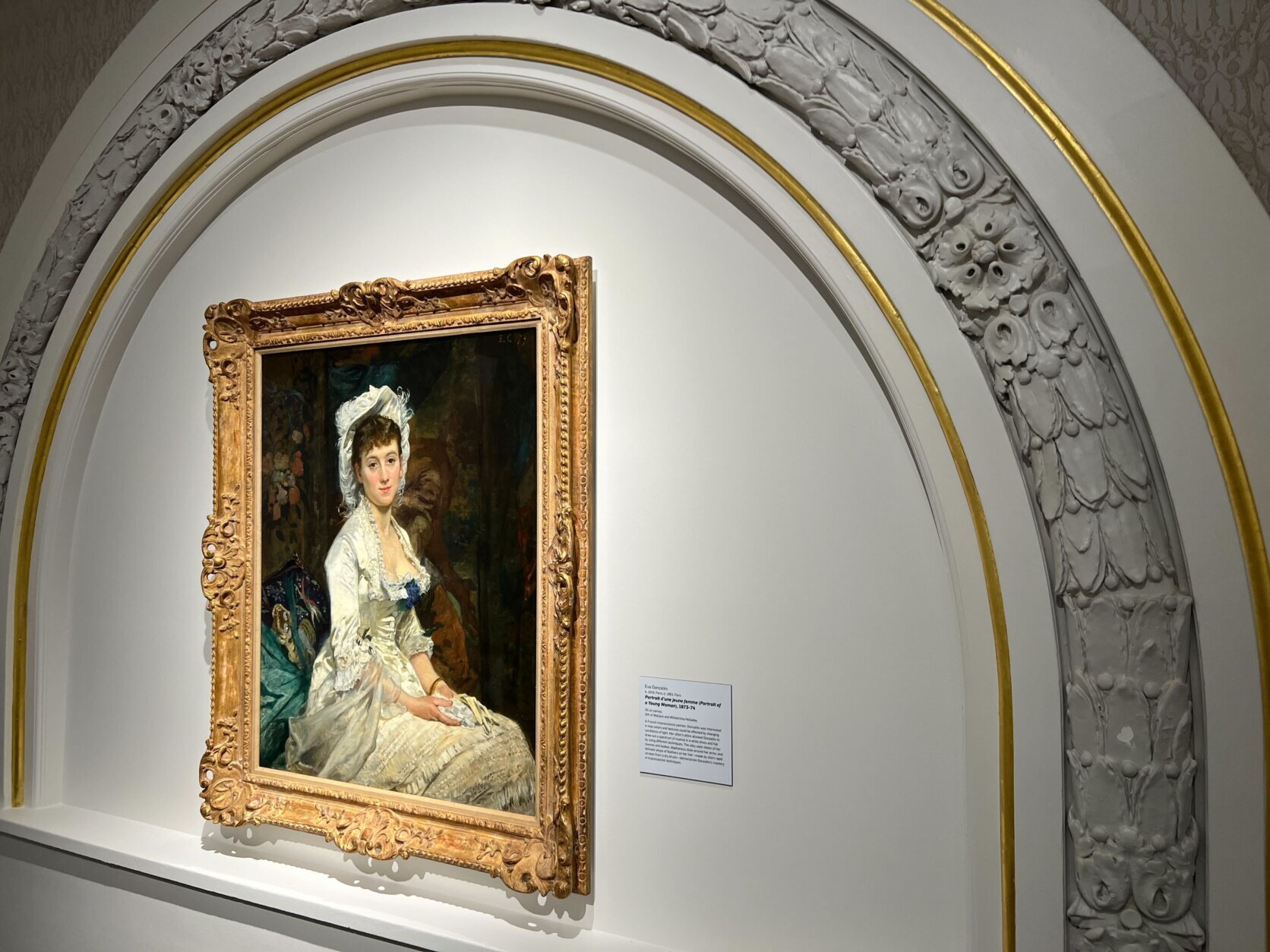 4/21
4/21
An impressionist painting by Eva Gonzalès.
(WTOP/Jessica Kronzer)
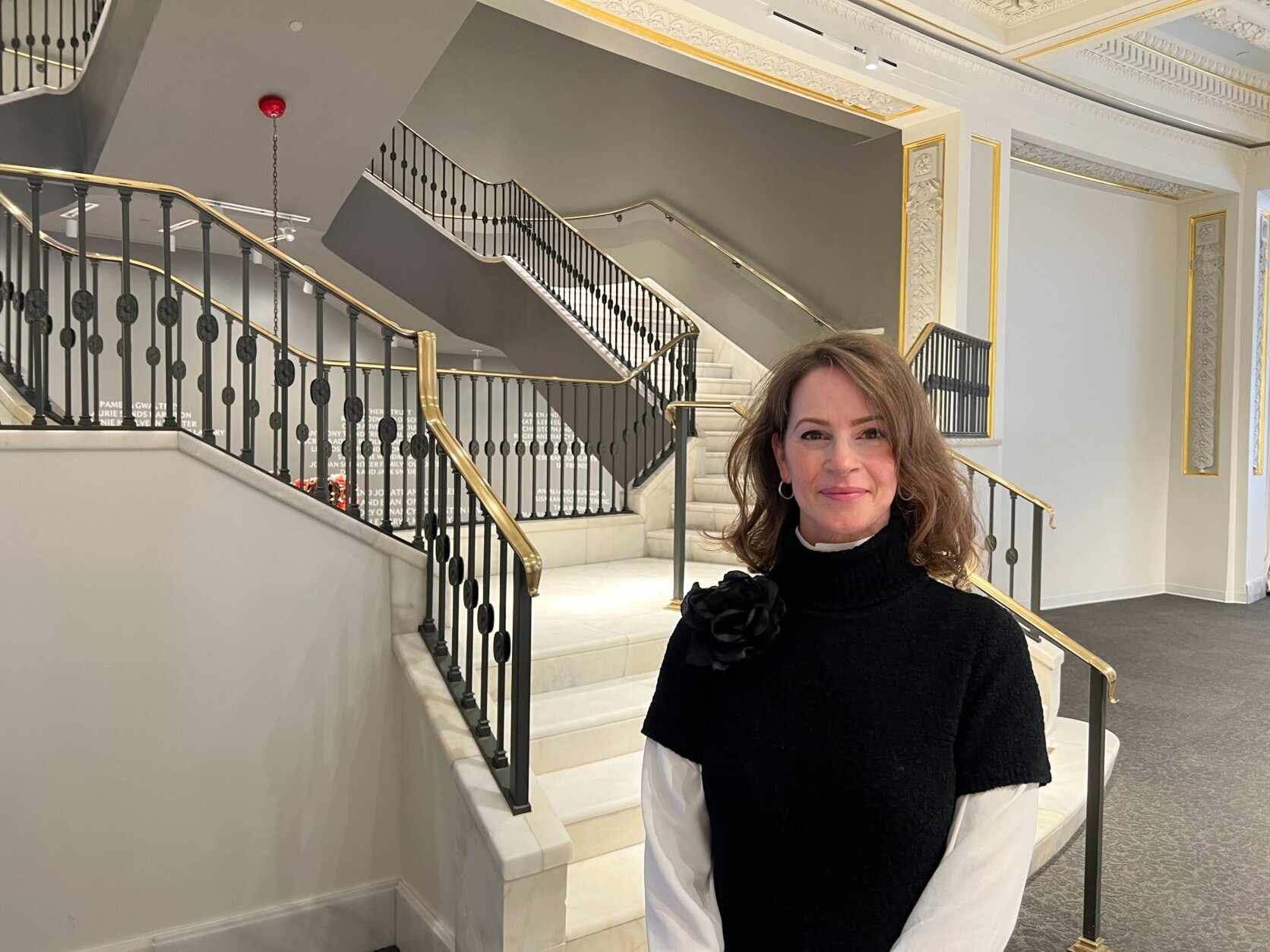 5/21
5/21
Katie Wat, the museum’s deputy director and chief curator, stands in the renovated great hall.
(WTOP/Jessica Kronzer)
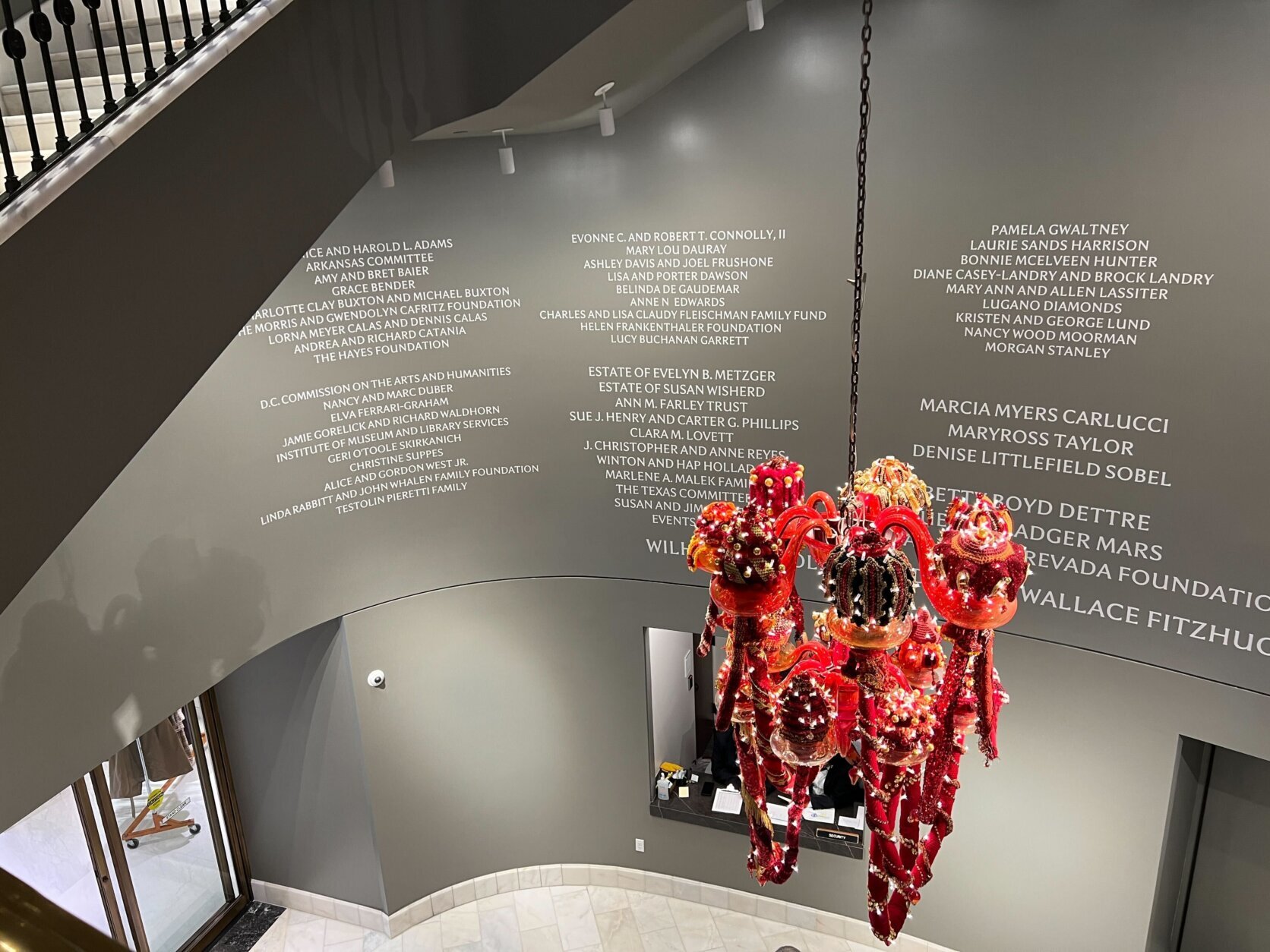 6/21
6/21
A red lighting structure hangs in the lobby.
(WTOP/Jessica Kronzer)
What’s new?
Changes to the museum start at the entrance, which now features a “more gracious and welcoming” experience for visitors, said Sandra Vicchio, the lead and design architect for the project.
“They’re going to see art from the moment they step through the door,” she said, referring to the red lighting structure hung in the lobby.
The building was built before air conditioning was widespread.
“We completely reworked the mechanical, so that air conditioning and heating system … is nearly invisible, and the art comes forward,” Vicchio said. “For me, one of the most important things about this project was that the art has the primary place. So it’s about the art, and the architecture is there to support it.”
The building also predates the Americans with Disabilities Act and updates have improved accessibility with new technology, such as large screens and signage to direct visitors.
“I feel like I’m doing right by the women artists who deserve the best space ever to see their works in, and then I also feel we’re being accessible to the public in ways that we were not able to before, and so that everybody can feel that this is an inviting and welcoming space,” Sterling said.
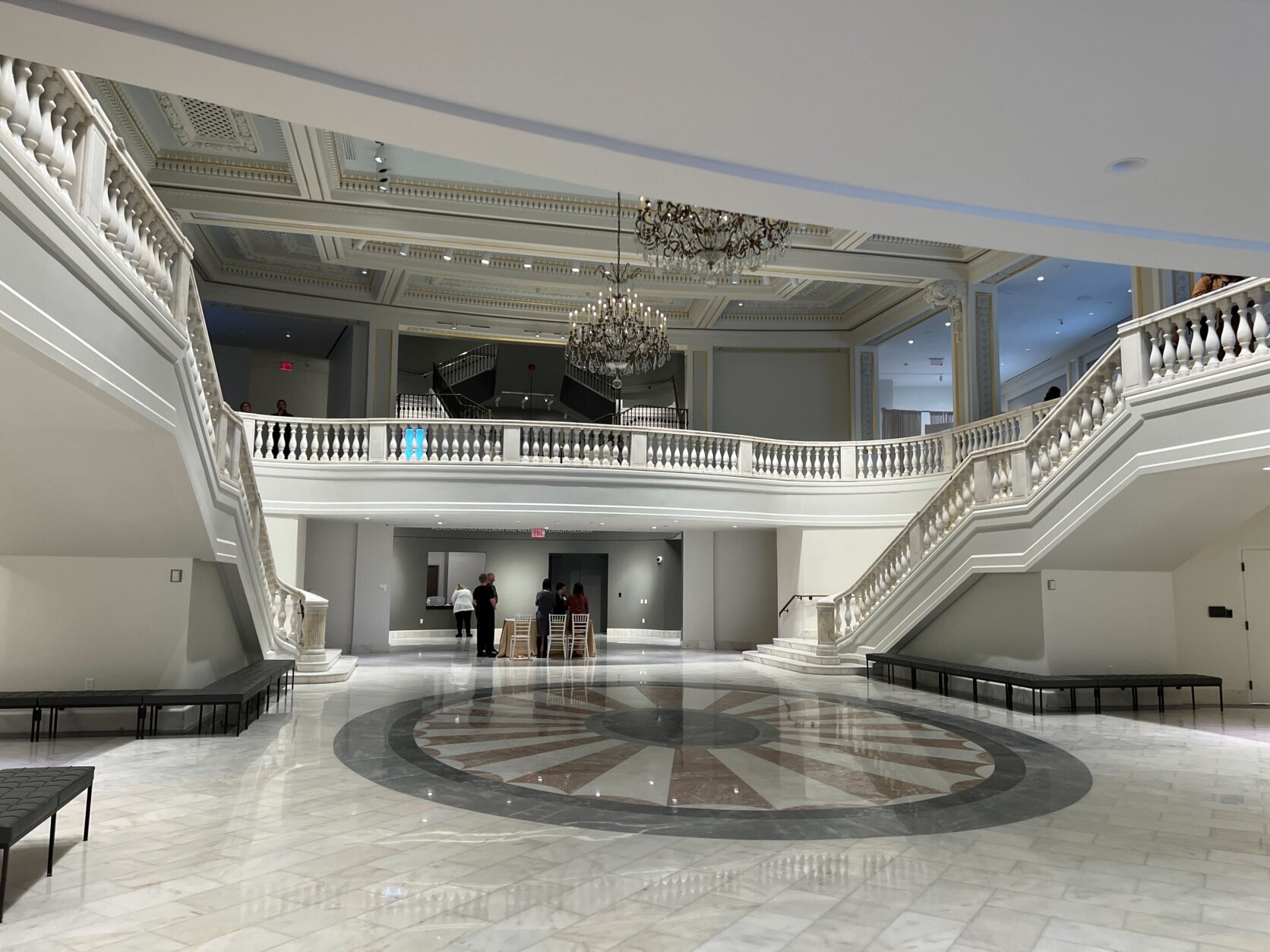 7/21
7/21
The museum’s great hall features the original ceilings and molding.
(WTOP/Jessica Kronzer)
The great hall may look familiar to repeat visitors, with changes to the aesthetic.
“We really wanted to preserve and enhance the architectural details,” Vicchio said.
The original ceilings and molding remain intact. The walls feature custom designs fabricated in South America that mimic the molding around the artwork.
But the galleries have been transformed with new lightning and expanded space.
“Upstairs in the galleries, it was more of a mission of innovation, so that we could create spaces in which the museum could achieve their ever-expanding vision for championing women in the arts,” Vicchio said.
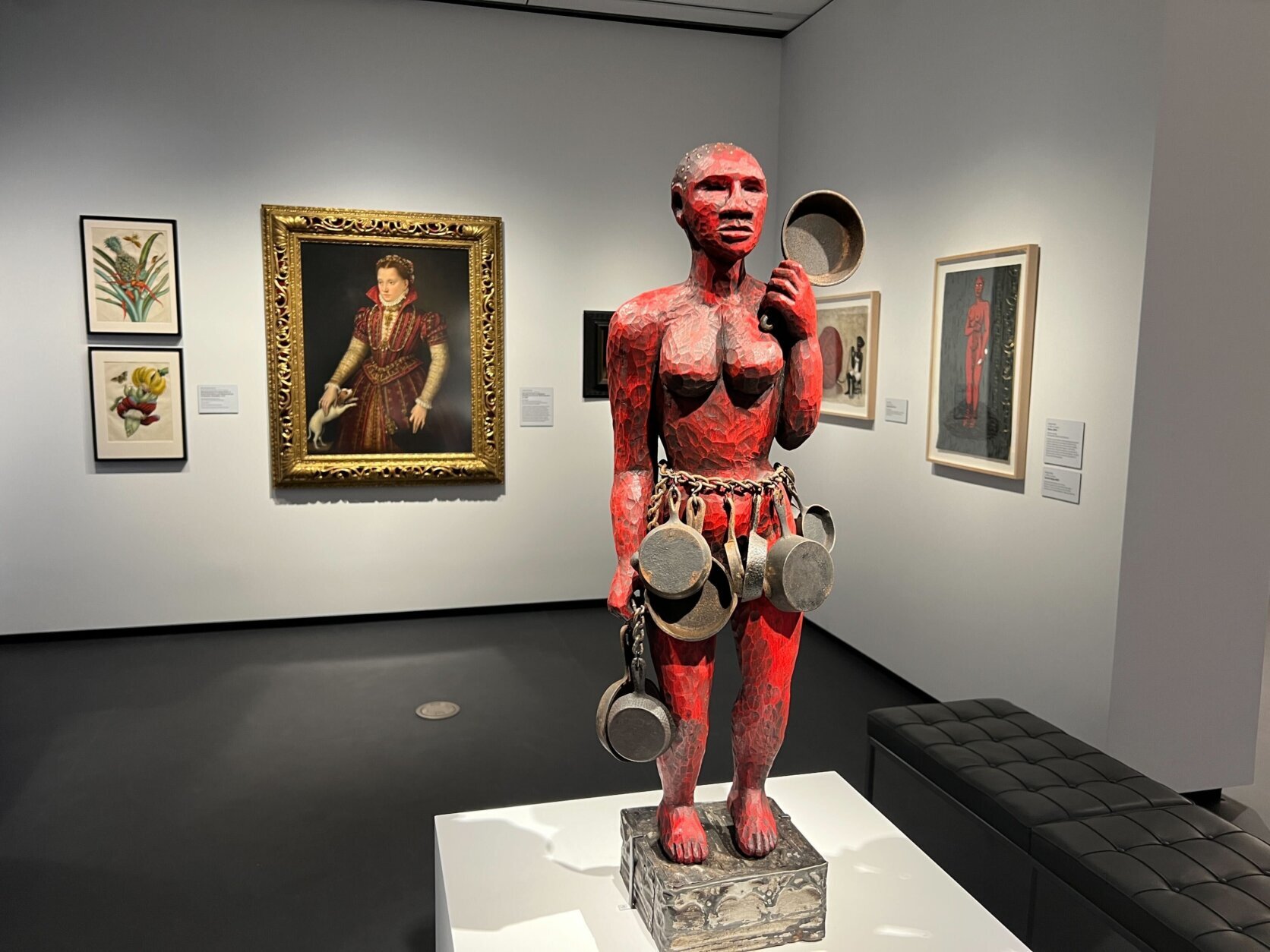 8/21
8/21
(WTOP/Jessica Kronzer)
“That had evolved from the very early origins of the museum, where you felt like you might be in someone’s parlor, viewing art, to galleries that are designed to have a much more open vista when you walk in, and then a series of smaller alcoves off of it,” Vicchio said of the new galleries.
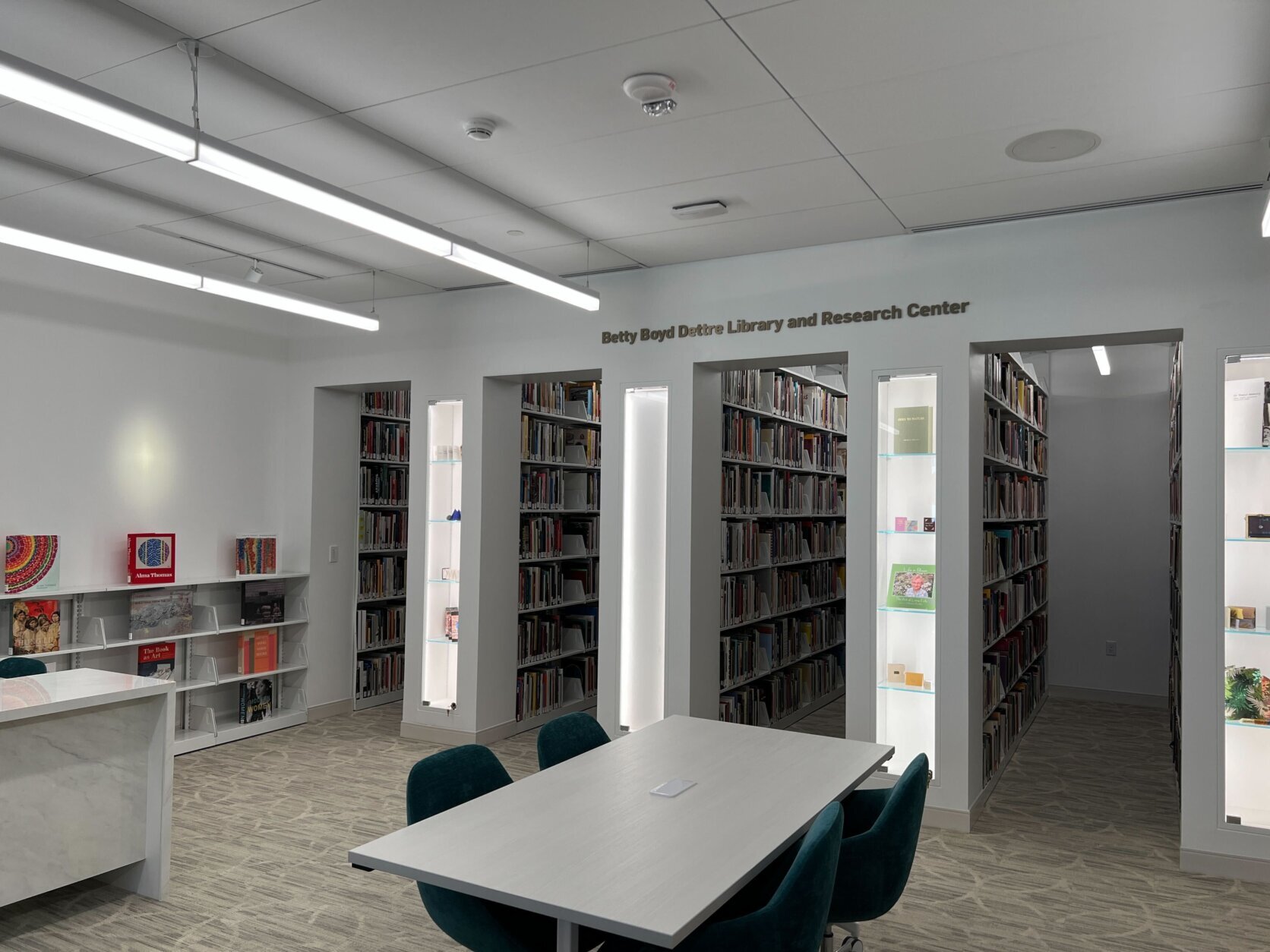 9/21
9/21
(WTOP/Jessica Kronzer)
The fourth floor is the learning commons.
“It’s the place where more of the museum changed than anywhere else,” Sterling said.
The library and research center were updated and the museum added a room that will be used for education and public programs.
In order to accommodate more compact storage in the library, Vicchio said “we had to literally take that floor out and build a new floor in its place that would support that increased load.”
The gallery space on the fourth floor was also expanded by 2,500 square feet.
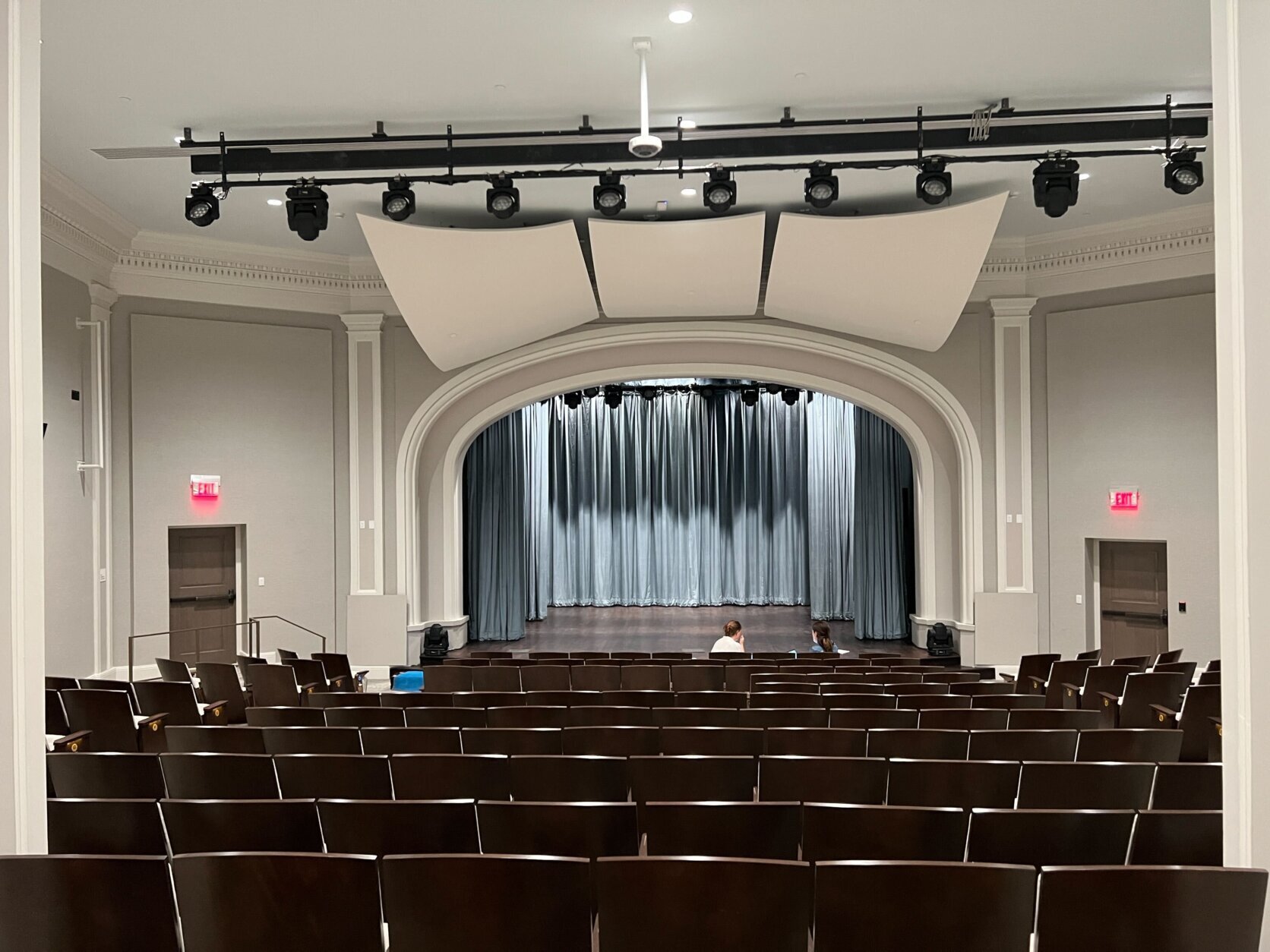 10/21
10/21
(WTOP/Jessica Kronzer)
The 182-seat performance hall, which hosts live programming, received a makeover. The technology was improved and it was also refurbished.
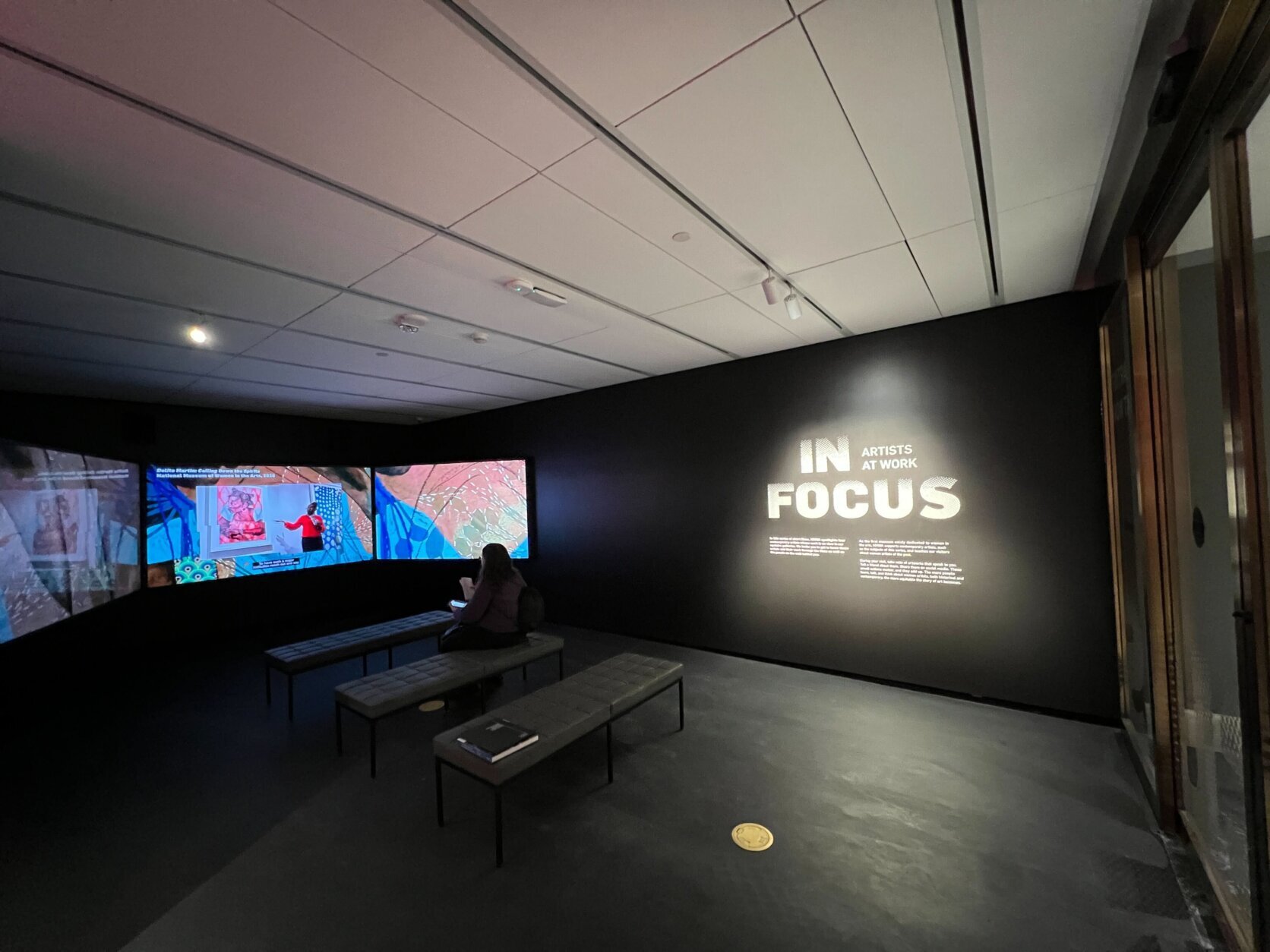 11/21
11/21
(WTOP/Jessica Kronzer)
A media installation in a room attached to the great hall showcases artists’ videos on three screens. Three short-films rotate on a continuous loop.
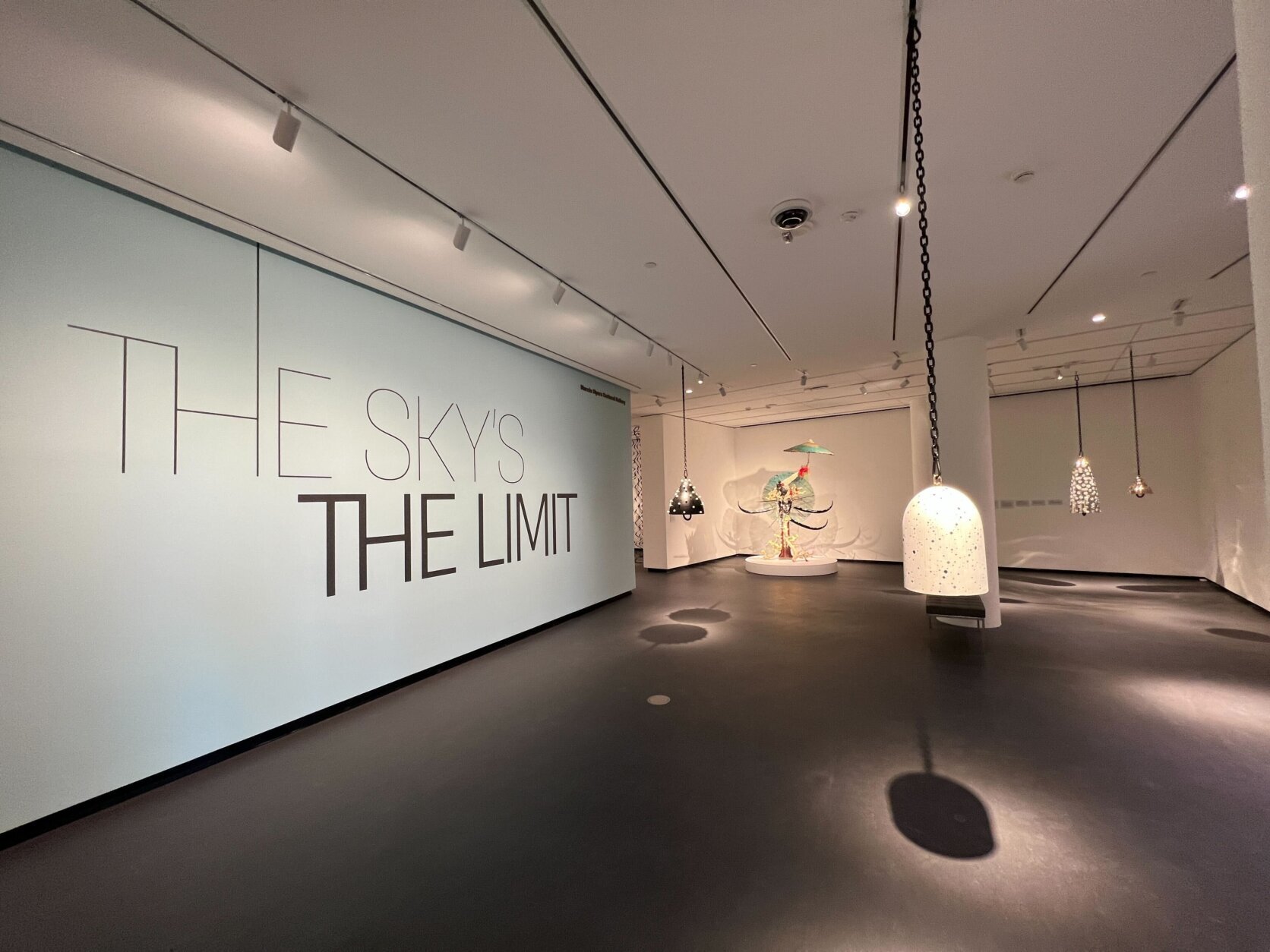 12/21
12/21
“The Sky Is The Limit” is a collection of works on the museum’s second floor.
(WTOP/Jessica Kronzer)
What’s inside?
“The Sky Is The Limit” collection showcases many works that were in the museum’s collection before. In the past, there wasn’t enough space for them to be displayed.
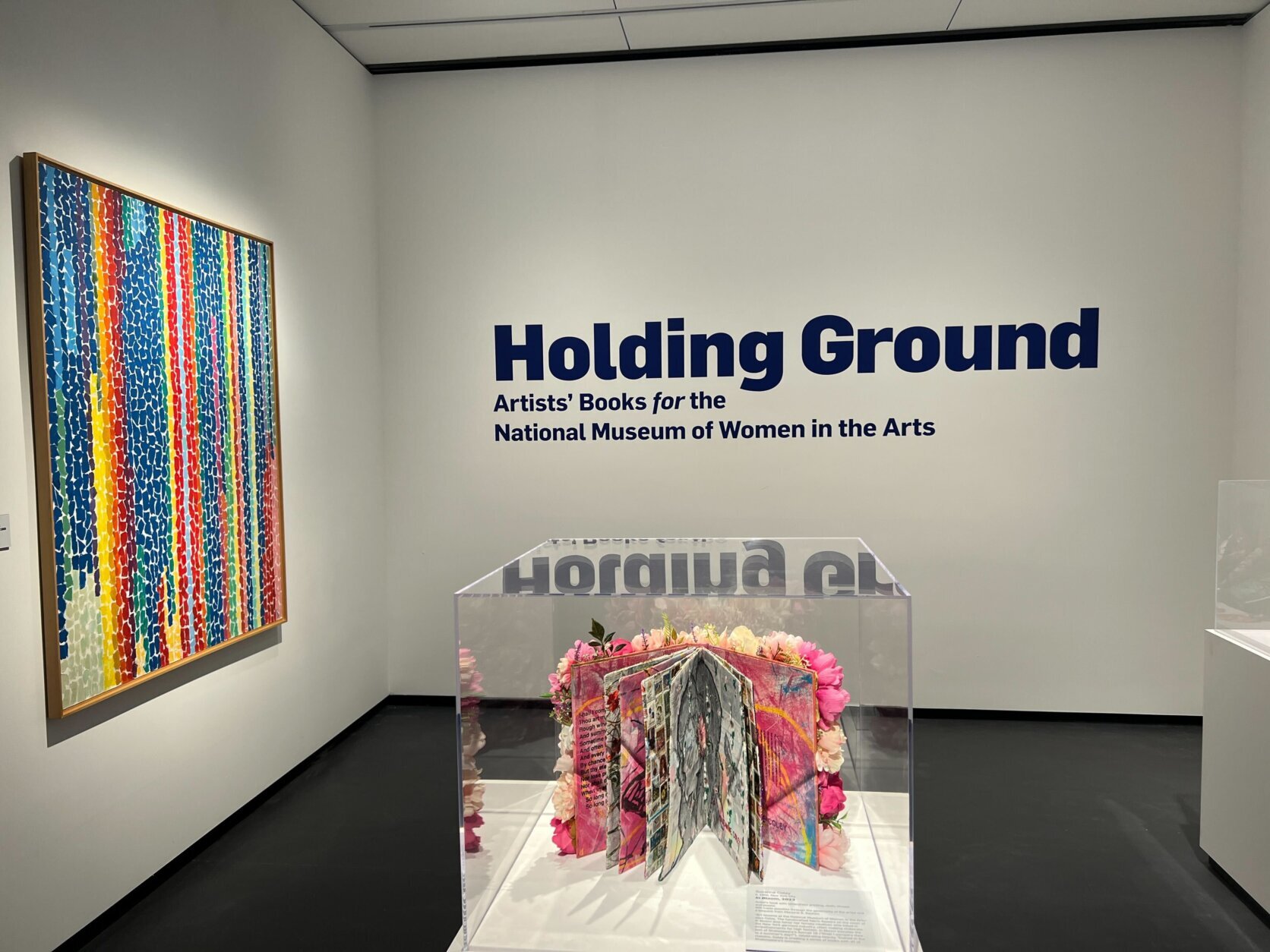 13/21
13/21
A book created by Baltimore artist Suzanne Coley.
(WTOP/Jessica Kronzer)
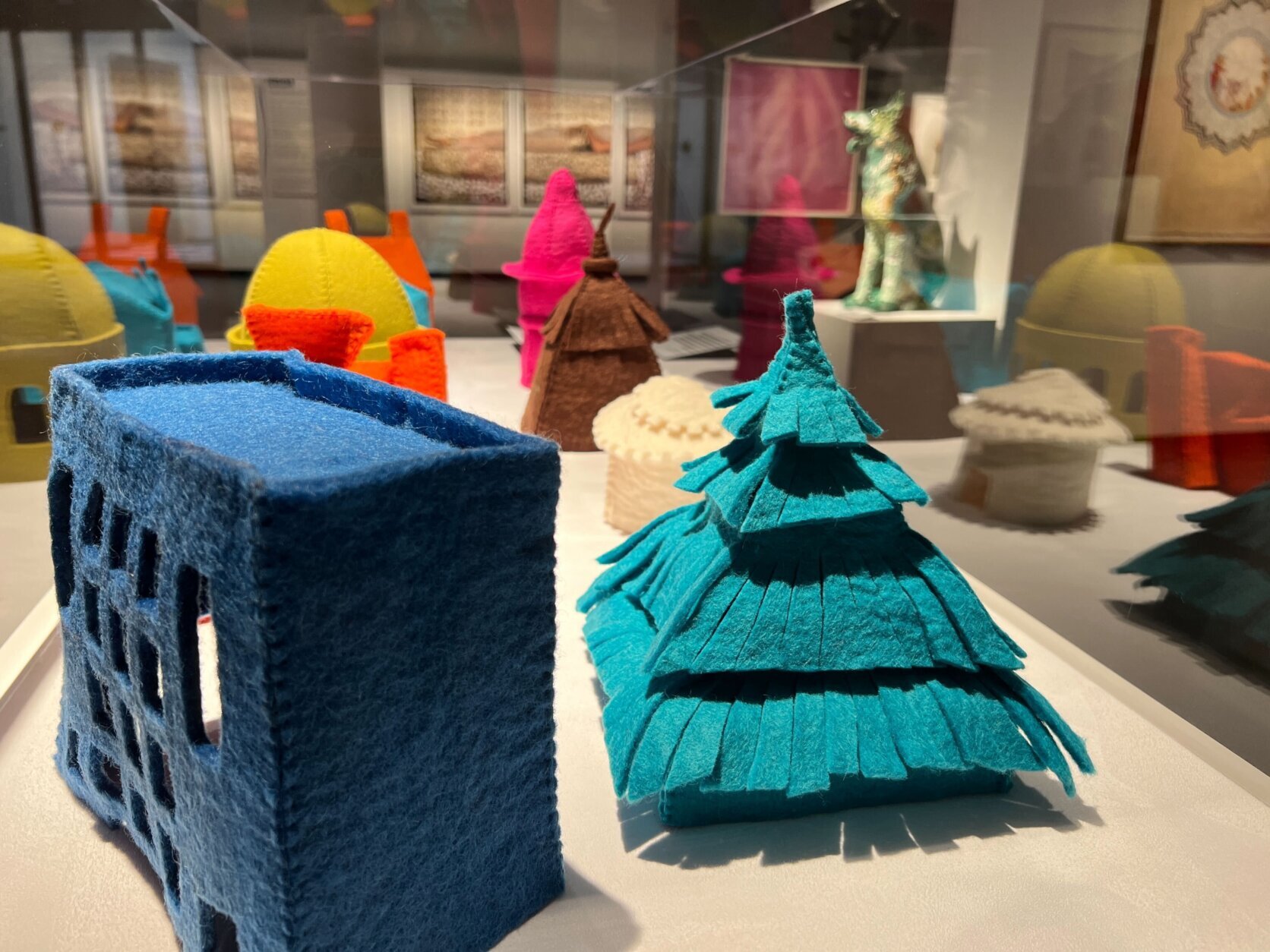 14/21
14/21
French artist Laure Tixier created different houses made of wool, felt and thread.
(WTOP/Jessica Kronzer)
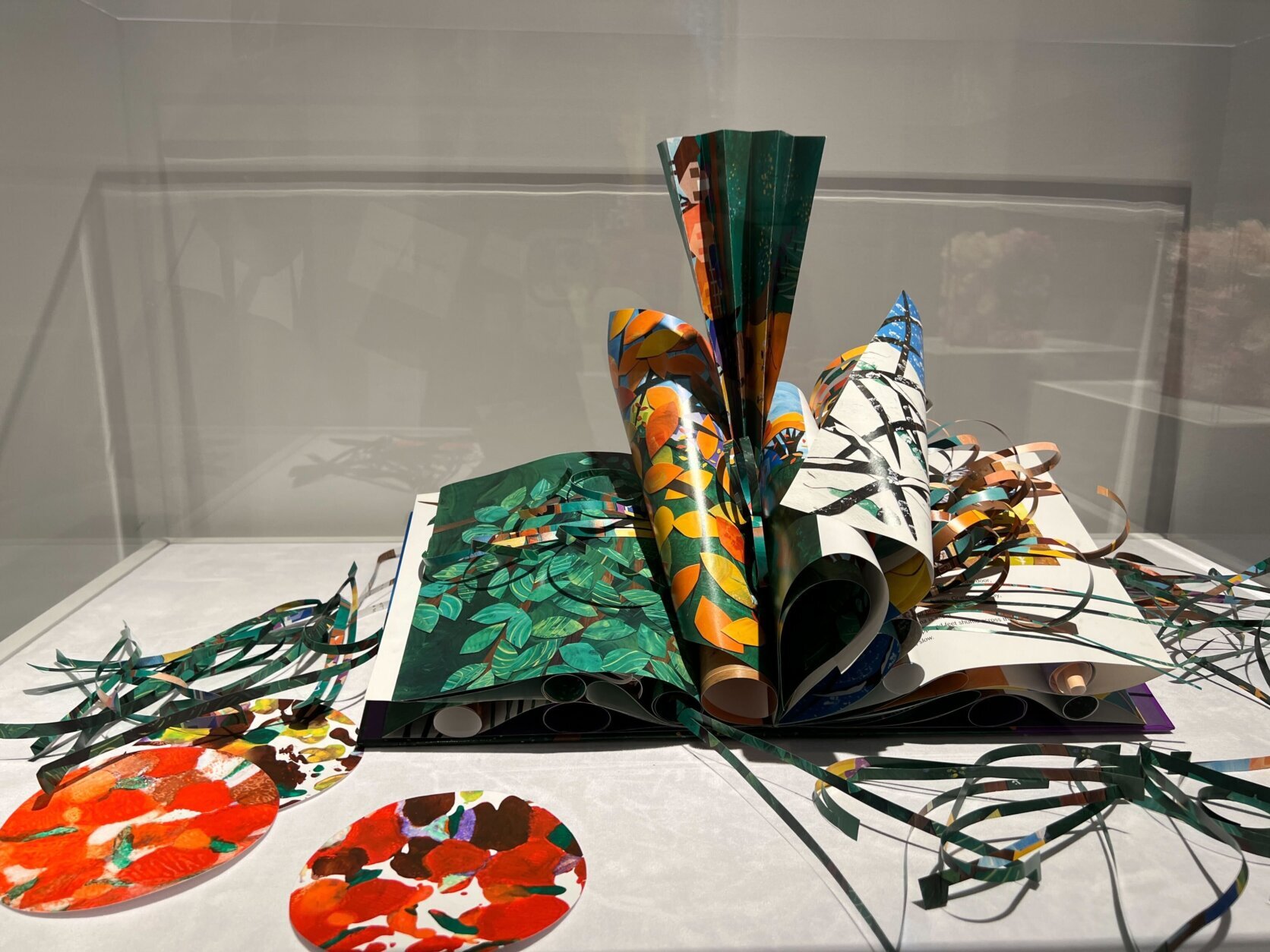 15/21
15/21
(WTOP/Jessica Kronzer)
A book created by artist Adjoa Jackson Burrowes in 1957 and gifted to the museum.
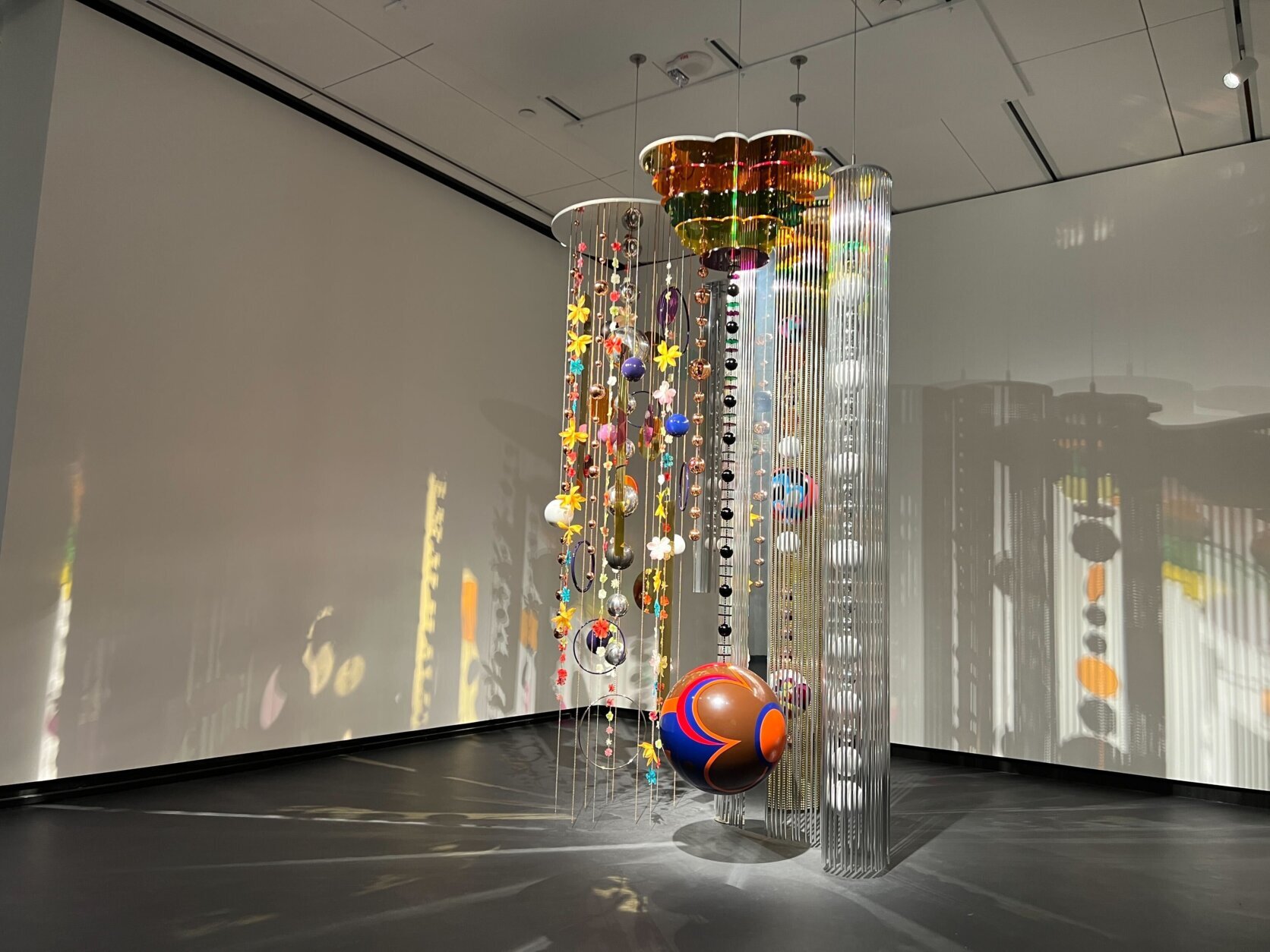 16/21
16/21
Artwork by Beatriz Milhazes made of painted aluminum and stainless steel, as well as polyester flowers.
(WTOP/Jessica Kronzer)
Some people may have preconceived notions about the type of art women create, but Wat said the museum’s collection shows how female artists create works on large scales, and at times, work with unexpected materials — even chainsaws, as seen in “The Sky Is The Limit” exhibition.
“It’s about upending people’s kind of set ideas about what women artists create, and showing them something entirely new and very exciting,” Wat said.
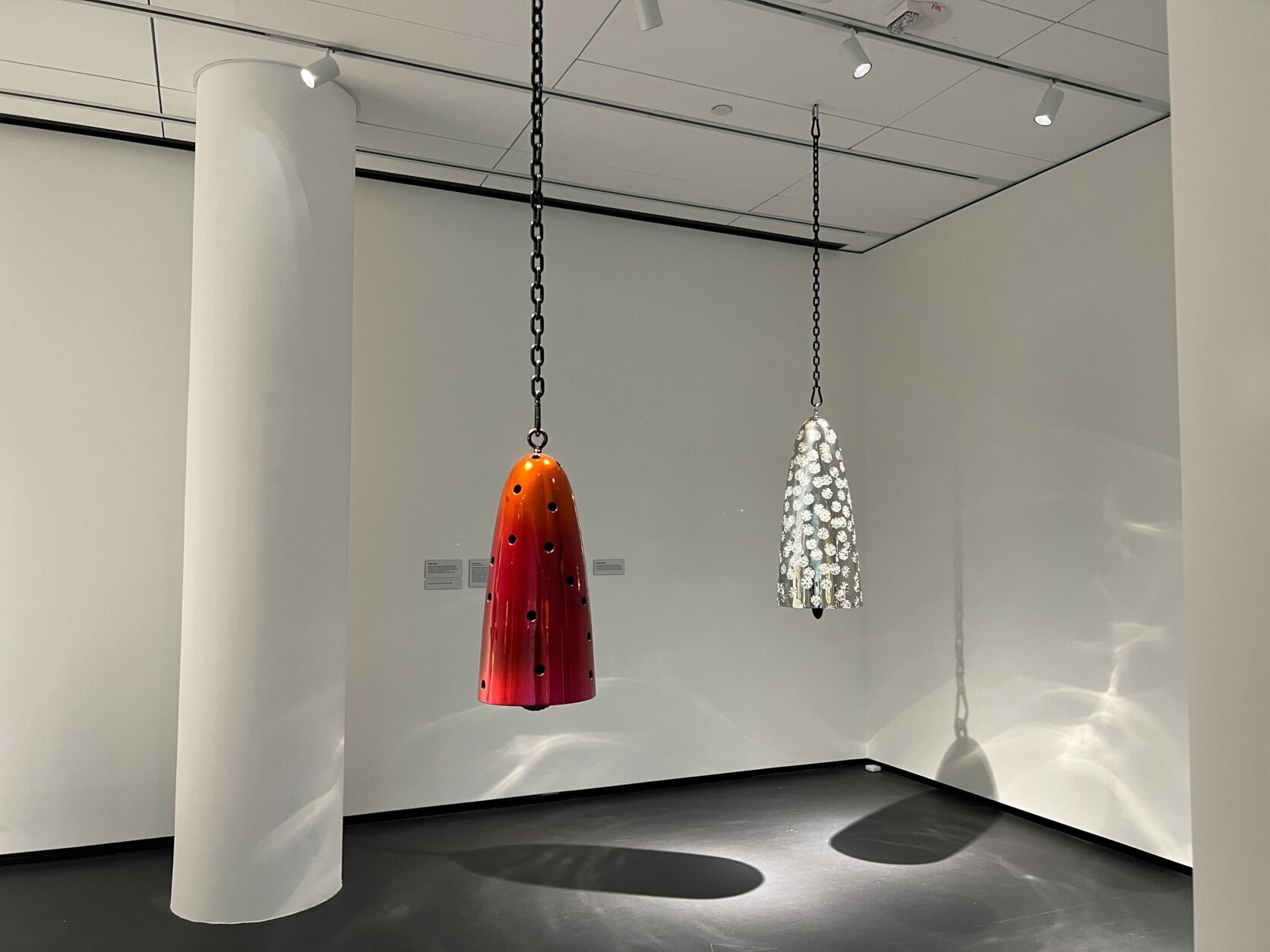 17/21
17/21
(WTOP/Jessica Kronzer)
Hear the bell painted red with automotive paint ring through the gallery space.
Bells of various sizes are hung throughout one installation.
“It kind of has these contradictory meanings of a signal of alarm but also a signal to call people to gather together,” exhibition coordinator Hannah Shambroom said. “In today’s society … we kind of have a personal alarm on our phones all the time. We have all these signals that are more individual than community based.”
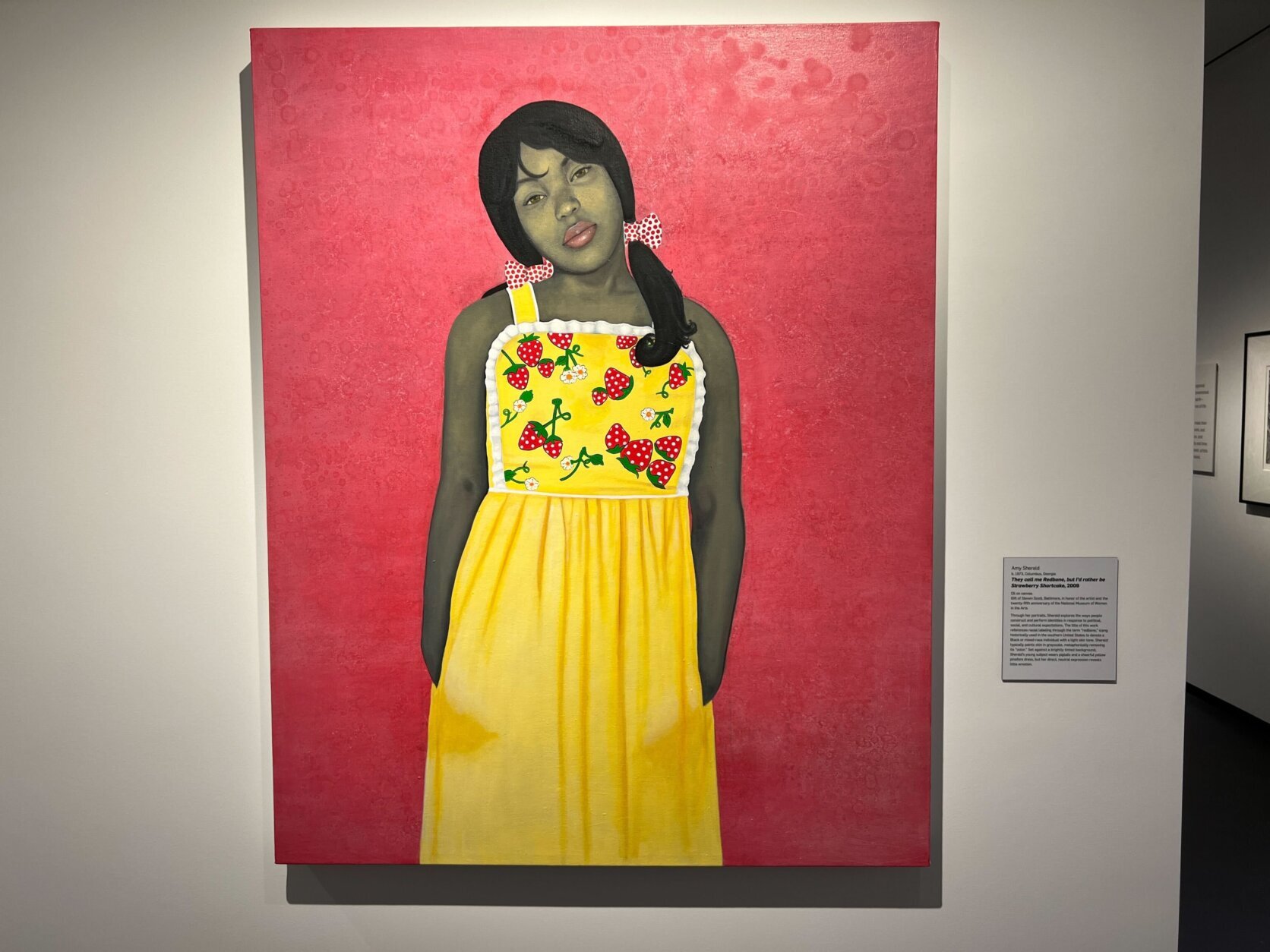 18/21
18/21
An oil painting by Amy Sherald from 1973.
(WTOP/Jessica Kronzer)
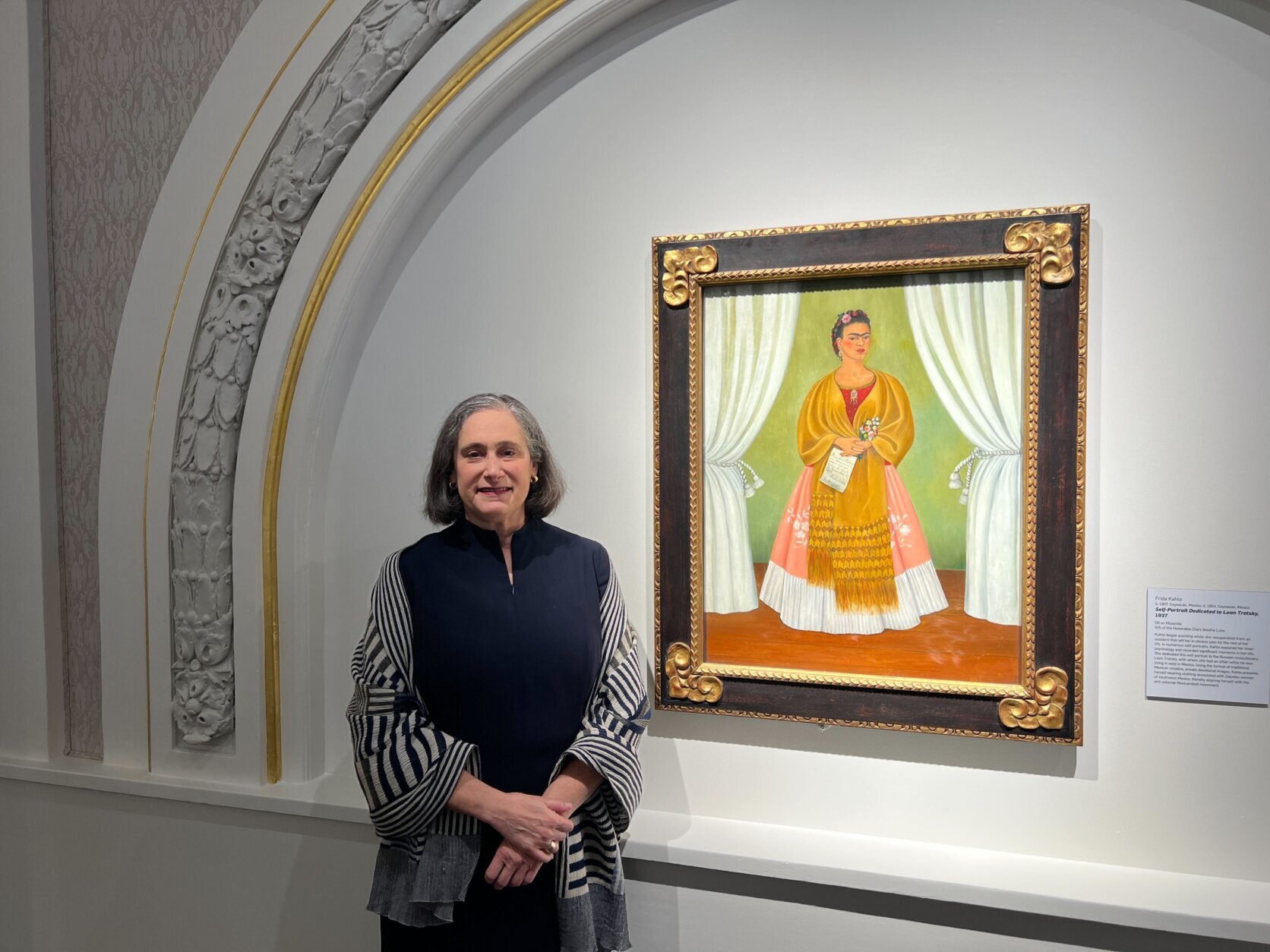 19/21
19/21
Sterling stands beside a self-portrait of Frida Kahlo, who is standing draped in a shawl and holding a bouquet and a letter.
(WTOP/Jessica Kronzer)
There are some “must-sees” for visitors that the museum staff recommends.
A popular suggestion is a self-portrait of Frida Kahlo, which is the only piece of her art display for the public in D.C. Wat said, “this is a little bit of a pilgrimage site for that reason.”
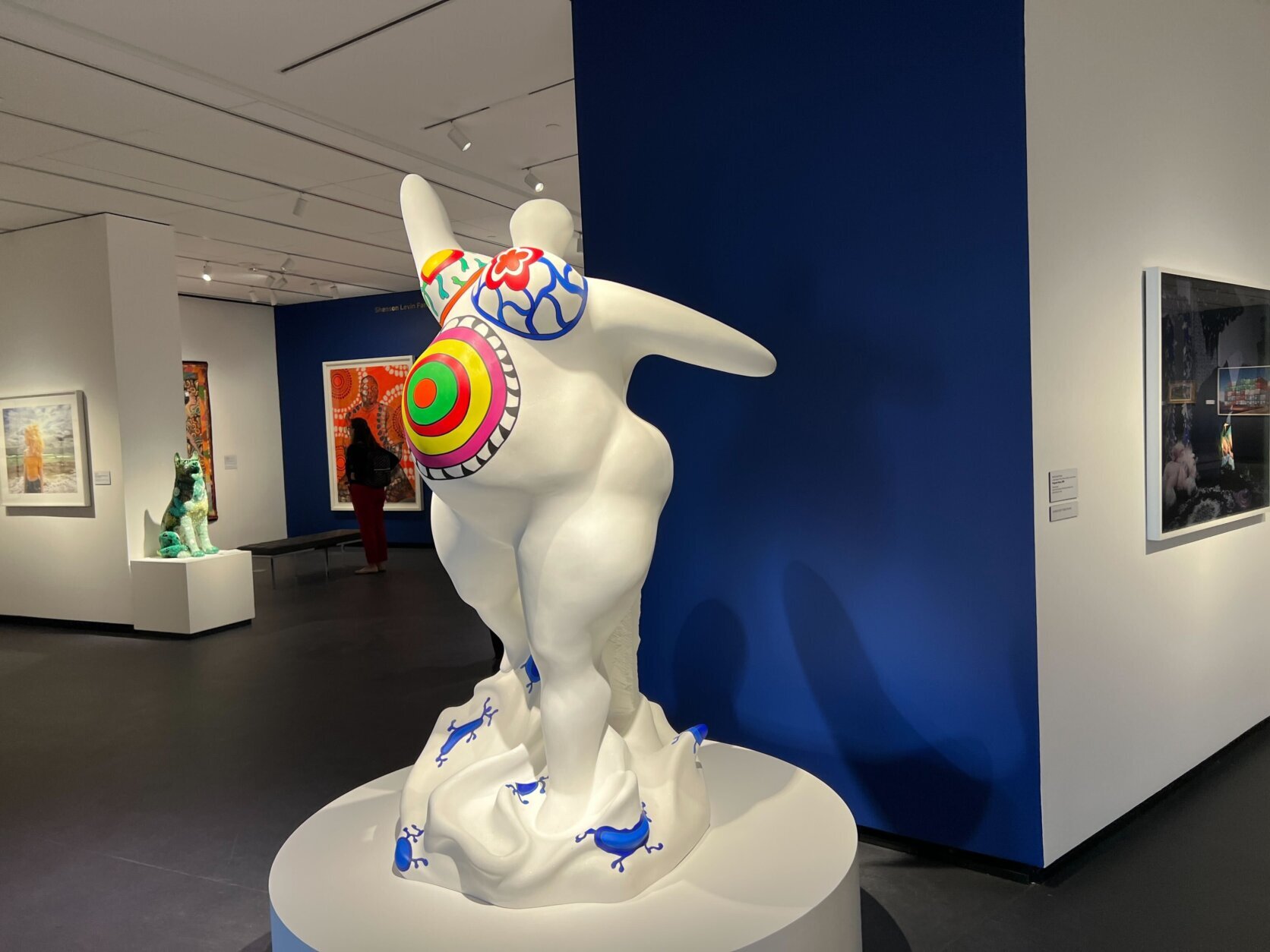 20/21
20/21
(WTOP/Jessica Kronzer)
Another piece that may leave some viewers stopped in their tracks is a sculpture on the third floor by Niki de Saint Phalle.
“She is, as I would say, open and welcoming and a very important statement about the way in which we like to embrace art, and tell stories,” Sterling said of the sculpture, which was a gift to the museum.
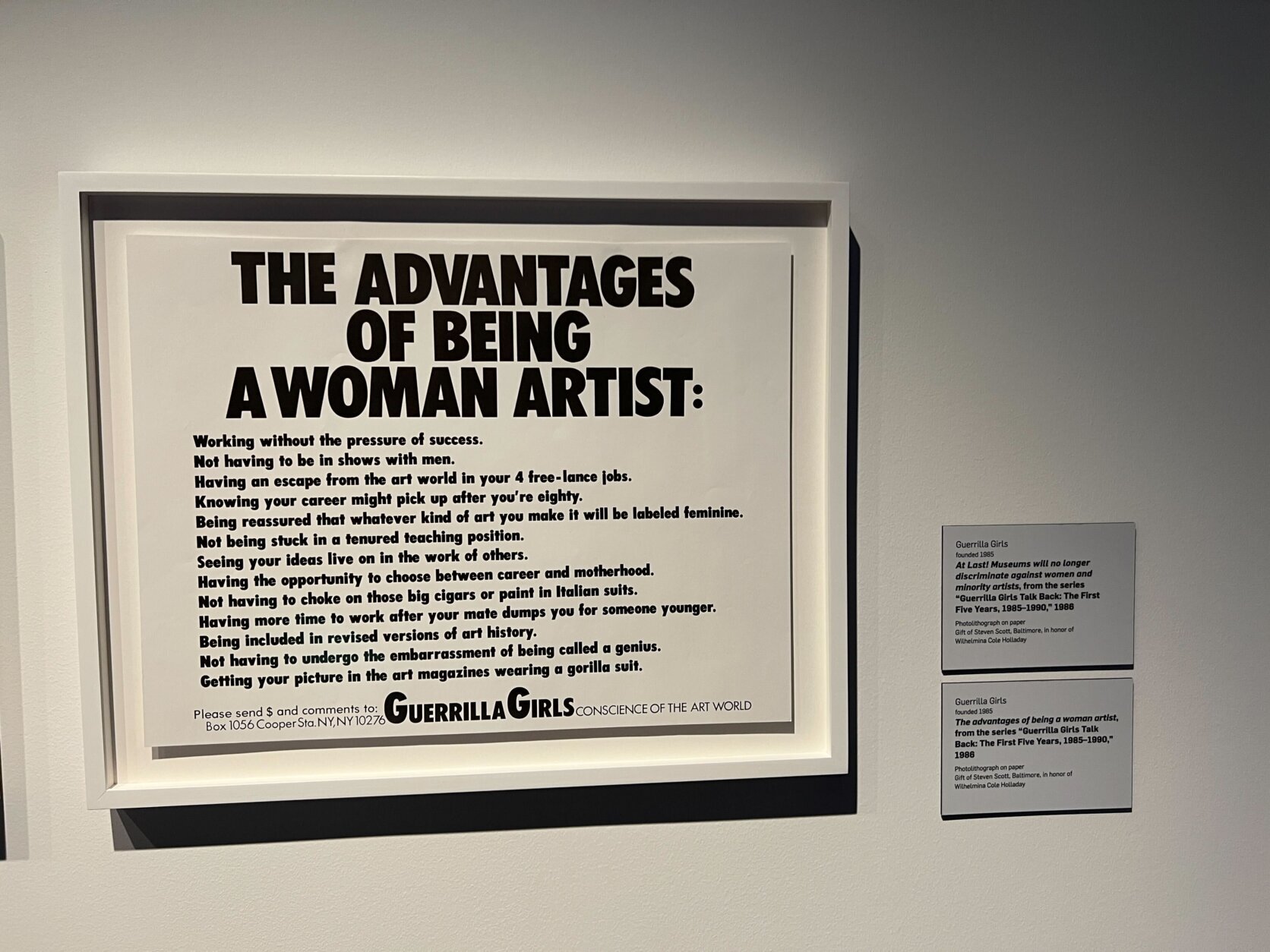 21/21
21/21
An artwork by the “Guerilla Girls” group.
(WTOP/Jessica Kronzer)
There’s been progress in museums, collectors and auction houses embracing women artists over the past several years, Wat said.
“That is really gratifying and it’s getting us excited,” Wat said. “But it feels like its early days yet and I think that this museum is going to be really critical to keeping the energy going in this movement toward really achieving gender equity.”
Jessica Kronzer
Jessica Kronzer graduated from James Madison University in May 2021 after studying media and politics. She enjoys covering politics, advocacy and compelling human-interest stories.






















